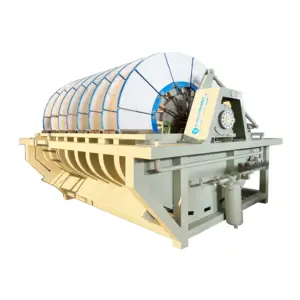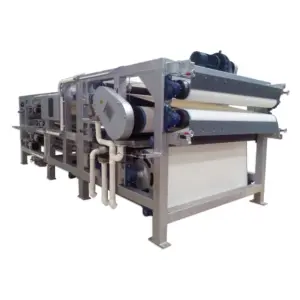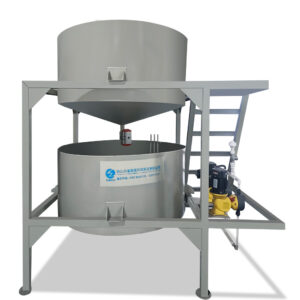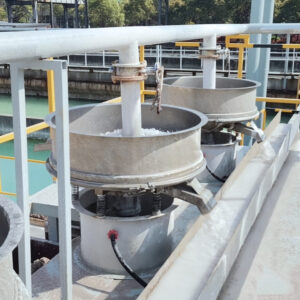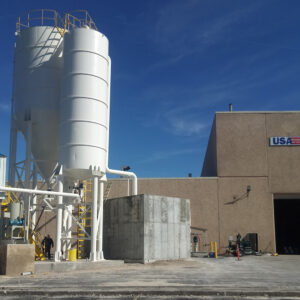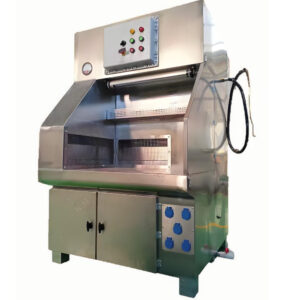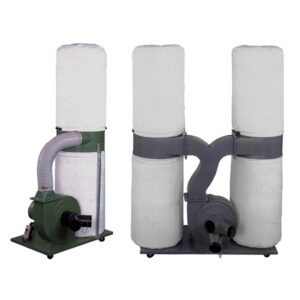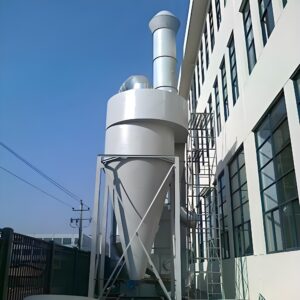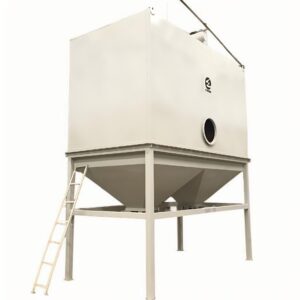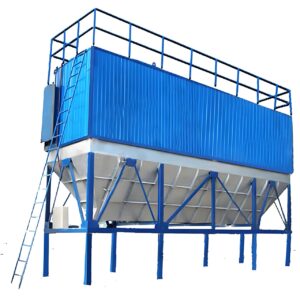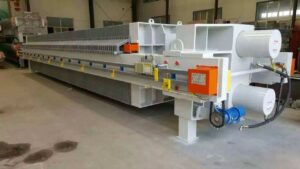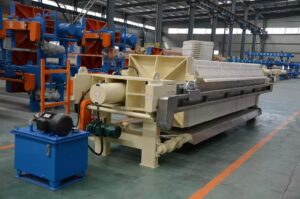Los sistemas de tratamiento de aguas residuales industriales son sofisticadas soluciones de ingeniería diseñadas para eliminar los contaminantes del agua vertida durante los procesos de fabricación. A diferencia del tratamiento de aguas residuales municipales, estos sistemas deben gestionar cargas contaminantes muy variables, composiciones químicas complejas y contaminantes específicos de la industria que requieren enfoques de tratamiento especializados.
PORVOO Clean Tech ha observado que los sistemas modernos de tratamiento industrial suelen procesar entre 10.000 y 500.000 galones al día, dependiendo del tamaño de la instalación y del tipo de industria. La complejidad de estos sistemas varía drásticamente en función de los contaminantes específicos presentes y de las normas de vertido exigidas.
Componentes básicos y tecnologías
La base de cualquier sistema eficaz de tratamiento de aguas residuales reside en sus componentes principales, cada uno de ellos diseñado para hacer frente a tipos específicos de contaminación. Los componentes primarios incluyen sistemas de cribado, clarificadores, reactores biológicos y unidades de filtración que funcionan en secuencia para eliminar progresivamente los contaminantes.
Las tecnologías de tratamiento físico constituyen la primera línea de defensa y utilizan tamices, desarenadores y clarificadores primarios para eliminar los sólidos en suspensión y los aceites. Estos sistemas suelen conseguir una eliminación de 60-70% del total de sólidos en suspensión, preparando las aguas residuales para etapas de tratamiento más avanzadas.
| Tecnología de tratamiento | Eficacia de la eliminación | Aplicaciones típicas |
|---|---|---|
| Sistemas de cribado | 20-40% TSS | Procesado de alimentos, textiles |
| Aclaración primaria | 60-70% TSS | Fabricación de productos químicos |
| Tratamiento biológico | 85-95% DBO | Farmacéutico, cervecero |
| Filtración por membrana | 99%+ bacterias/virus | Electrónica, aeroespacial |
Los procesos de tratamiento químico emplean la coagulación, la floculación y la precipitación para eliminar los metales disueltos y otros contaminantes. Los procesos de oxidación avanzada (POA) se utilizan cada vez más para los compuestos orgánicos recalcitrantes, alcanzando eficiencias de destrucción de 90-99% para contaminantes específicos.
Tipos de aguas residuales industriales
Las características de las aguas residuales industriales varían significativamente de un sector a otro, lo que exige planteamientos de tratamiento adaptados. Las instalaciones de fabricación suelen generar aguas residuales de proceso que contienen metales, aceites y sólidos en suspensión, mientras que las operaciones farmacéuticas producen compuestos orgánicos complejos e ingredientes farmacéuticos activos (API).
Las industrias de procesamiento químico presentan retos únicos con corrientes de aguas residuales altamente ácidas o alcalinas que contienen metales pesados y compuestos orgánicos tóxicos. Según nuestra experiencia, estas instalaciones suelen requerir sistemas de tratamiento multietapa con procesos especializados de precipitación química y oxidación avanzada para cumplir las normas.
Las operaciones de alimentación y bebidas generan aguas residuales orgánicas de alta resistencia con niveles de demanda bioquímica de oxígeno (DBO) que oscilan entre 1.000 y 10.000 mg/L, significativamente superiores a los de las aguas residuales municipales típicas de 200-300 mg/L. Esto requiere sistemas de tratamiento biológico robustos capaces de manejar tasas de carga orgánica variables.
¿Cómo funcionan los sistemas de tratamiento de aguas residuales industriales?
El tratamiento de las aguas residuales industriales se lleva a cabo mediante una progresión sistemática de procesos físicos, químicos y biológicos diseñados para eliminar contaminantes específicos al tiempo que se cumplen los estrictos criterios de vertido. El tren de tratamiento suele comenzar con un tratamiento preliminar para eliminar los residuos de gran tamaño y continúa con procesos cada vez más sofisticados.
La igualación de caudales es un componente fundamental, pero a menudo ignorado, que amortigua las variaciones de volumen y composición de las aguas residuales que pueden saturar los procesos de tratamiento aguas abajo. Unas balsas de ecualización correctamente diseñadas pueden reducir los caudales punta entre un 40 y un 60%, mejorando significativamente el rendimiento general del sistema.
Procesos de tratamiento primario
El tratamiento primario se centra en la separación física de los sólidos en suspensión y los materiales flotantes mediante la sedimentación por gravedad y el desnatado superficial. Los clarificadores primarios modernos consiguen una eliminación de 50-70% de los sólidos suspendidos totales y una reducción de 25-35% de la demanda bioquímica de oxígeno mediante un diseño hidráulico optimizado y la adición de productos químicos.
Los sistemas de flotación por aire disuelto (DAF) destacan en industrias con una importante contaminación por aceites y grasas, como la metalúrgica y la alimentaria. Estos sistemas pueden eliminar aceites y sólidos en suspensión creando burbujas de aire microscópicas que se adhieren a los contaminantes y los hacen flotar para facilitar su eliminación.
El tratamiento primario mejorado incorpora coagulación y floculación químicas para mejorar la eficacia de la eliminación. Según investigaciones recientes del sector, la adición de productos químicos puede aumentar la eliminación de sólidos en suspensión hasta 80-85% y, al mismo tiempo, eliminar 40-50% de fósforo y metales asociados.
Métodos de tratamiento secundario y terciario
El tratamiento secundario emplea procesos biológicos para eliminar la materia orgánica disuelta mediante una actividad microbiana cuidadosamente controlada. Los sistemas de fangos activados siguen siendo el método más común, utilizando concentraciones de sólidos en suspensión de licor mixto (MLSS) de 2.000-4.000 mg/L para lograr la eliminación de 85-95% DBO.
Los biorreactores de membrana (MBR) representan una tecnología avanzada de tratamiento secundario que combina el tratamiento biológico con la filtración por membrana. Estos sistemas producen sistemáticamente efluentes con menos de 5 mg/L de DBO y eliminan prácticamente los sólidos en suspensión, aunque requieren 20-30% más de energía que los sistemas convencionales de fangos activados.
El tratamiento terciario se ocupa de contaminantes específicos que permanecen tras el tratamiento secundario, como nutrientes, metales traza y contaminantes emergentes. Las tecnologías de tratamiento avanzadas, como la ósmosis inversa, la oxidación avanzada y el intercambio iónico, pueden lograr eficiencias de eliminación superiores a 99% para los compuestos objetivo.
| Nivel de tratamiento | Eliminación de la DBO | Eliminación de SST | Calidad típica del efluente |
|---|---|---|---|
| Principal | 25-35% | 50-70% | 150-200 mg/L DBO |
| Secundaria | 85-95% | 85-95% | 10-30 mg/L DBO |
| Terciario | 95-99% | 95-99% | <5 mg/L DBO |
¿Cuáles son las principales ventajas de los sistemas comerciales de tratamiento de agua?
Los sistemas comerciales de tratamiento de aguas aportan un valor cuantificable en múltiples dimensiones operativas y estratégicas, desde el cumplimiento de la normativa hasta las oportunidades de recuperación de recursos. Las instalaciones modernas consideran cada vez más estos sistemas como centros de beneficios en lugar de gastos necesarios, sobre todo cuando se diseñan con capacidades de recuperación y reutilización de recursos.
El beneficio más inmediato tiene que ver con el cumplimiento de la normativa, ya que los reglamentos medioambientales siguen endureciéndose en todo el mundo. Las instalaciones con un diseño adecuado sistemas de tratamiento de aguas residuales industriales suelen mantener índices de cumplimiento de los permisos de vertido superiores a 95%, evitando costosas sanciones e interrupciones operativas.
Cumplimiento de la normativa medioambiental y ventajas reglamentarias
El cumplimiento de la normativa medioambiental es el principal motor de la inversión en sistemas de tratamiento de aguas residuales, ya que las multas por incumplimiento oscilan entre $10.000 y $50.000 por infracción. Además de evitar las multas, los sistemas de tratamiento robustos proporcionan estabilidad operativa y un rendimiento medioambiental predecible que favorece la continuidad de la actividad empresarial.
Los marcos normativos hacen cada vez más hincapié en la prevención de la contaminación y la recuperación de recursos, creando oportunidades para que las instalaciones superen los requisitos de cumplimiento y generen al mismo tiempo fuentes de ingresos adicionales. Las industrias que aplican sistemas de vertido cero de líquidos (ZLD) informan de reducciones de 15-25% en los costes totales del agua gracias a la maximización de la reutilización y la recuperación.
A medida que la normativa medioambiental evoluciona hacia límites de vertido más estrictos y categorías de contaminantes ampliadas, los sistemas de tratamiento preparados para el futuro ofrecen ventajas competitivas. Las instalaciones con capacidades de tratamiento avanzadas pueden adaptarse a los nuevos requisitos con una inversión de capital mínima, mientras que los competidores pueden enfrentarse a costosas actualizaciones de los sistemas.
Ahorro de costes y eficiencia operativa
Los ahorros de costes directos de los sistemas de tratamiento de aguas residuales se derivan principalmente de la reducción del consumo de agua, la disminución de las tasas de descarga del alcantarillado y la disminución de los costes de eliminación de residuos. Las instalaciones de fabricación suelen reducir el consumo municipal de agua entre un 30 y un 50% mediante la reutilización del agua tratada para aplicaciones de refrigeración, limpieza y procesos.
La recuperación de energía representa una oportunidad emergente, sobre todo para las instalaciones con aguas residuales orgánicas de alta resistencia. Los sistemas de digestión anaerobia pueden generar entre 8 y 12 pies cúbicos de biogás por libra de materia orgánica eliminada, lo que podría compensar entre 20 y 40% de los costes energéticos de las instalaciones.
Una planta de fabricación de productos farmacéuticos de Alemania obtuvo resultados notables con la implantación de un sistema integrado de tratamiento y recuperación. La instalación redujo el consumo de agua bruta en 45%, eliminó las tasas de vertido al alcantarillado por un total de 180.000 euros anuales y recuperó disolventes valiosos por valor de 250.000 euros al año. Aunque la inversión de 2,1 millones de euros en el sistema requirió un importante capital inicial, la instalación recuperó la inversión en 3,2 años gracias al ahorro operativo y la recuperación de recursos.
¿Cómo elegir el sistema de tratamiento de aguas residuales adecuado para su sector?
La selección de la tecnología óptima de tratamiento de aguas residuales requiere un análisis exhaustivo de las características de las aguas residuales, los requisitos de vertido, las limitaciones operativas y los objetivos estratégicos a largo plazo. El marco de decisión debe dar prioridad al rendimiento del tratamiento, la fiabilidad operativa y el coste total de propiedad sobre los costes de capital iniciales.
Los reglamentos y normas de vertido específicos de cada sector influyen significativamente en la selección de la tecnología, ya que los límites de contaminantes y los requisitos de control varían según el sector. Las instalaciones farmacéuticas, por ejemplo, deben hacer frente a trazas de compuestos orgánicos e ingredientes farmacéuticos activos que requieren métodos de tratamiento especializados que no son necesarios en las aplicaciones de procesamiento de alimentos.
Requisitos específicos del sector
Las industrias manufactureras presentan distintos retos en materia de tratamiento de aguas residuales que requieren soluciones tecnológicas a medida. Las operaciones de acabado de metales generan aguas residuales que contienen metales pesados, cianuros y sales concentradas que requieren sistemas especializados de precipitación química e intercambio iónico para alcanzar límites de vertido inferiores a miligramos por litro.
Las empresas de alimentación y bebidas necesitan sistemas de tratamiento capaces de gestionar cargas orgánicas elevadas con variaciones estacionales significativas. Las fábricas de cerveza, por ejemplo, generan aguas residuales con concentraciones de DBO que oscilan entre 1.200 y 3.600 mg/L durante los periodos de máxima producción, lo que requiere sistemas de tratamiento biológico flexibles con capacidad de igualación de cargas.
Las instalaciones de procesamiento químico suelen requerir enfoques de tratamiento multibarrera que combinen procesos físicos, químicos y biológicos para tratar mezclas complejas de contaminantes. Según los expertos del sector, estas instalaciones suelen requerir entre 40 y 60% más de inversión de capital por galón de capacidad de tratamiento en comparación con el tratamiento convencional de aguas residuales orgánicas.
Capacidad y rendimiento
El dimensionamiento del sistema debe tener en cuenta tanto los índices actuales de generación de aguas residuales como el crecimiento previsto a lo largo de los 20-25 años de vida útil del sistema. Los sistemas infradimensionados dan lugar a un rendimiento deficiente y a infracciones de la normativa, mientras que los sobredimensionados malgastan capital y aumentan los costes de explotación debido a un funcionamiento ineficaz.
La gestión de los picos de caudal es un aspecto crítico del diseño, ya que muchos procesos industriales generan caudales de aguas residuales muy variables. Los sistemas de tratamiento deben admitir caudales punta 2-3 veces superiores a los caudales medios diarios sin degradar su rendimiento, lo que suele requerir una ecualización del caudal y una capacidad de tratamiento flexible.
| Sector industrial | Caudal típico | Multiplicador de flujo máximo | Contaminantes clave |
|---|---|---|---|
| Procesado de alimentos | 500-5.000 GPD | 2.5-3.5x | DBO, SST, aceites |
| Acabado de metales | 1.000-10.000 GPD | 2.0-2.5x | Metales pesados, cianuro |
| Productos farmacéuticos | 2.000-15.000 GPD | 1.5-2.0x | Productos orgánicos, API |
| Fabricación de productos químicos | 5.000-50.000 GPD | 2.0-4.0x | Ácidos, bases, disolventes |
La fiabilidad del rendimiento es primordial en las operaciones de fabricación continua, en las que los fallos del sistema de tratamiento pueden obligar a realizar costosas paradas de producción. La capacidad de tratamiento redundante, el control automatizado de los procesos y los sistemas de supervisión exhaustivos garantizan la continuidad operativa incluso durante el mantenimiento de los equipos o las alteraciones inesperadas de los procesos.
¿Cuáles son los retos habituales en el tratamiento de efluentes industriales?
Los sistemas de tratamiento de aguas residuales industriales se enfrentan a retos operativos que pueden afectar significativamente al rendimiento, los costes y el cumplimiento de la normativa. Comprender estas limitaciones permite a los gestores de las instalaciones aplicar estrategias de gestión proactivas y expectativas de rendimiento realistas.
Los requisitos de cualificación de los operarios representan un reto persistente, ya que los sistemas de tratamiento modernos requieren conocimientos especializados de química de procesos, microbiología y sistemas de control avanzados. Las encuestas del sector indican que el 60-70% de los problemas de rendimiento de los sistemas de tratamiento se deben a una formación inadecuada de los operarios o a limitaciones de personal, más que a fallos de los equipos.
Limitaciones técnicas y problemas de mantenimiento
El ensuciamiento de las membranas representa uno de los retos técnicos más importantes de los sistemas de tratamiento avanzados, sobre todo en instalaciones con una elevada carga orgánica o de sólidos en suspensión. Los costes de sustitución de las membranas pueden oscilar entre $50.000 y $200.000 anuales en sistemas de escala industrial, mientras que el tiempo de inactividad relacionado con las incrustaciones puede superar los 10-15% de tiempo operativo.
Los sistemas de tratamiento biológico se enfrentan a limitaciones inherentes al procesar compuestos tóxicos o inhibidores que pueden alterar las poblaciones microbianas. La recuperación de las alteraciones biológicas suele requerir de 2 a 4 semanas, durante las cuales el rendimiento del tratamiento puede verse gravemente comprometido. Esta vulnerabilidad requiere sistemas sólidos de pretratamiento y control de la toxicidad.
La gestión de lodos plantea continuos retos operativos, ya que los procesos de tratamiento generan lodos residuales que requieren una manipulación y eliminación adecuadas. Los costes de eliminación de lodos oscilan entre $200-800 por tonelada en función de las características y la normativa local, lo que representa entre el 15 y el 25% de los costes totales de explotación de muchas instalaciones.
Gestión de costes y retorno de la inversión
Las variaciones de los costes de explotación superan con creces las previsiones iniciales de muchos sistemas de tratamiento industrial, debido principalmente al consumo de energía, el uso de productos químicos y las necesidades de mantenimiento. Los costes de explotación reales superan con frecuencia las estimaciones de diseño en 20-40%, sobre todo en el caso de instalaciones con características variables de aguas residuales.
El consumo de energía representa el mayor gasto de explotación controlable, y suele representar entre 25 y 35% de los costes totales de explotación. Los sistemas de aireación en los procesos de tratamiento biológico consumen entre 45 y 75% de la energía eléctrica total, por lo que la selección y optimización de equipos energéticamente eficientes es fundamental para la rentabilidad a largo plazo.
Una fábrica textil del sudeste asiático sufrió importantes sobrecostes cuando el consumo energético de su sistema de tratamiento superó las previsiones en 60%. Las aguas residuales de la instalación contenían concentraciones de colorantes superiores a las previstas, lo que obligó a prolongar los periodos de aireación y a aplicar tratamientos químicos adicionales. Aunque el sistema cumplió la normativa, los costes de explotación alcanzaron $0,45 por metro cúbico tratado, casi el doble de la estimación inicial de $0,25.
¿Cuánto cuestan los sistemas de tratamiento de aguas residuales industriales?
Los costes de los sistemas de tratamiento de aguas residuales industriales varían enormemente en función de la complejidad del tratamiento, los requisitos de capacidad y los factores específicos del emplazamiento. Los costes de capital suelen oscilar entre $500 y $3.000 por galón de capacidad de tratamiento diario, mientras que los costes de explotación se sitúan en una media de $1,50 a $8,00 por cada mil galones tratados.
Para comprender el coste total de propiedad es necesario analizar la inversión de capital, los gastos de funcionamiento y los costes del ciclo de vida a lo largo de los 20-25 años de vida útil del sistema. Sistemas avanzados de tratamiento de aguas residuales con capacidad de recuperación de recursos suelen justificar inversiones iniciales más elevadas gracias a la reducción de los costes de explotación y a los flujos de valor recuperados.
Inversión inicial y costes de instalación
Los costes de capital abarcan el equipo, la instalación, la preparación del emplazamiento y las actividades de puesta en marcha que constituyen la inversión inicial. Los sistemas básicos de tratamiento físico-químico suelen costar $800-1.200 por GPD de capacidad, mientras que los sistemas avanzados de tratamiento biológico oscilan entre $1.500-2.500 por GPD de capacidad.
La preparación del terreno y el desarrollo de infraestructuras pueden añadir 25-40% a los costes de los equipos, sobre todo en el caso de instalaciones que requieran importantes modificaciones eléctricas, de tuberías o estructurales. Los costes de permisos e ingeniería suelen representar entre 15 y 20% de los costes totales del proyecto, variando significativamente en función de la complejidad de la normativa y los requisitos locales.
Las tecnologías de tratamiento avanzadas tienen un precio elevado, pero a menudo ofrecen un rendimiento y una flexibilidad operativa superiores. Los sistemas de biorreactores de membrana cuestan 40-60% más que los sistemas convencionales de lodos activados, pero producen un efluente constante de alta calidad apto para aplicaciones de reutilización directa.
Gastos de explotación y mantenimiento
Los costes de explotación anuales suelen oscilar entre 8 y 15% de la inversión de capital, e incluyen energía, productos químicos, mano de obra y actividades de mantenimiento. Los costes energéticos dominan los gastos de explotación de la mayoría de los sistemas de tratamiento, sobre todo los que emplean tecnologías de tratamiento biológico o de membranas.
El consumo de productos químicos varía considerablemente en función de las características de las aguas residuales y del método de tratamiento. Las instalaciones que utilizan la precipitación química para la eliminación de metales suelen gastar $0,50-2,00 por cada mil galones en productos químicos de tratamiento, mientras que los sistemas de tratamiento biológico pueden necesitar sólo $0,10-0,30 por cada mil galones para nutrientes y ajuste del pH.
| Componente de coste | Porcentaje de los costes de explotación | Alcance típico |
|---|---|---|
| Energía | 35-45% | $0,30-1,50/1000 galones |
| Trabajo | 25-35% | $0,25-1,00/1000 galones |
| Productos químicos | 15-25% | $0,10-0,80/1000 galones |
| Mantenimiento | 10-20% | $0,15-0,60/1000 galones |
Los costes de mantenimiento aumentan significativamente a medida que envejecen los sistemas, ya que normalmente es necesario sustituir los equipos principales cada 10-15 años. El establecimiento de programas integrales de mantenimiento preventivo puede reducir los costes totales de mantenimiento en un 20-30%, al tiempo que mejora la fiabilidad y el rendimiento del sistema.
¿Cuáles son las últimas innovaciones en sistemas de gestión de aguas residuales?
El sector del tratamiento de aguas residuales está experimentando un rápido avance tecnológico impulsado por la digitalización, los imperativos de sostenibilidad y la evolución de la normativa. Estas innovaciones prometen transformar el rendimiento del tratamiento, la eficiencia operativa y el potencial de recuperación de recursos en la próxima década.
La inteligencia artificial y las aplicaciones de aprendizaje automático están revolucionando la optimización de los sistemas de tratamiento, permitiendo el mantenimiento predictivo, el control automatizado de procesos y la optimización del rendimiento en tiempo real. Los primeros en adoptarlas informan de mejoras de 10-20% en la eficiencia del tratamiento y reducciones similares en los costes operativos.
Integración de tecnología inteligente
Los sensores del Internet de las Cosas (IoT) y los sistemas de monitorización avanzados proporcionan una visibilidad sin precedentes del rendimiento del proceso de tratamiento, lo que permite una gestión y optimización proactivas. Los sistemas modernos pueden monitorizar docenas de parámetros en tiempo real, identificando tendencias de rendimiento y posibles problemas antes de que afecten a la calidad del efluente.
Las plataformas de análisis predictivo analizan los datos históricos de rendimiento para prever las necesidades de mantenimiento, el consumo de productos químicos y las oportunidades de optimización de procesos. Estos sistemas pueden predecir los fallos de los equipos con 2-4 semanas de antelación, lo que permite planificar un mantenimiento que minimice las interrupciones operativas.
Una planta de fabricación de automóviles de Alemania implantó una completa monitorización IoT en todo su sistema de tratamiento, instalando 147 sensores que controlaban desde los caudales hasta la actividad microbiana. Los algoritmos de aprendizaje automático del sistema optimizaron la dosificación de productos químicos y los controles de aireación, reduciendo los costes operativos en 18% y mejorando la consistencia de la calidad del efluente en 25%.
Soluciones de tratamiento sostenibles
Los principios de la economía circular están impulsando la innovación hacia tecnologías de recuperación de recursos y minimización de residuos. Los sistemas avanzados de tratamiento incorporan cada vez más capacidades de recuperación de energía, extracción de nutrientes y reutilización del agua que transforman los flujos de residuos en recursos valiosos.
Los biorreactores anaerobios de membrana (AnMBR) representan una tecnología emergente que combina el tratamiento biológico con la recuperación de metano y la producción de efluentes de alta calidad. Estos sistemas pueden lograr un funcionamiento neto positivo desde el punto de vista energético a la vez que producen efluentes aptos para aplicaciones de reutilización directa.
Las tecnologías de recuperación de recursos se están expandiendo más allá del biogás y los biosólidos tradicionales para incluir la recuperación de fósforo, la extracción de elementos de tierras raras y la producción de productos químicos de alto valor. Según las investigaciones del sector, los sistemas integrados de recuperación de recursos pueden generar $0,50-2,00 por cada mil galones en valor recuperado, lo que mejora significativamente la economía del proyecto.
Conclusión
Los sistemas de tratamiento de aguas residuales industriales representan inversiones críticas en infraestructuras que, cuando se diseñan e implantan correctamente, proporcionan conformidad medioambiental, eficiencia operativa y ventajas competitivas. Las principales conclusiones de este exhaustivo análisis subrayan la importancia de seleccionar la tecnología en función de las características específicas de las aguas residuales, los requisitos normativos y los objetivos estratégicos a largo plazo.
Los sistemas de tratamiento modernos ofrecen oportunidades sin precedentes para la recuperación de recursos y la optimización operativa mediante la integración de tecnologías inteligentes y principios de diseño sostenibles. Aunque las inversiones de capital iniciales siguen siendo significativas, el análisis del coste total de propiedad favorece sistemáticamente las tecnologías de tratamiento avanzadas que ofrecen un rendimiento fiable y flexibilidad operativa.
De cara al futuro, la integración de la inteligencia artificial, la monitorización IoT y los principios de la economía circular seguirán transformando el tratamiento de aguas residuales, que pasará de ser una necesidad de cumplimiento a un activo empresarial estratégico. Las instalaciones que inviertan hoy en tecnologías de tratamiento preparadas para el futuro estarán en condiciones de aprovechar las nuevas oportunidades y mantener sus ventajas competitivas.
Tanto si está evaluando opciones de tratamiento para una nueva instalación como si desea actualizar los sistemas existentes, la clave del éxito reside en un análisis exhaustivo de sus requisitos específicos y objetivos a largo plazo. Considere la posibilidad de asociarse con proveedores de sistemas de tratamiento experimentados que puedan guiarle a través del complejo proceso de toma de decisiones y ofrecerle soluciones probadas de tratamiento de aguas residuales a la medida de sus necesidades.
¿A qué retos concretos se enfrentan sus instalaciones de tratamiento de aguas residuales y cómo podrían estas tecnologías innovadoras dar respuesta a sus necesidades operativas?
Preguntas frecuentes
Q: ¿Qué son los sistemas de tratamiento de aguas residuales industriales y por qué son importantes?
R: Los sistemas de tratamiento de aguas residuales industriales son instalaciones especializadas diseñadas para tratar las aguas residuales generadas por procesos industriales. Eliminan los contaminantes nocivos para evitar la contaminación ambiental y cumplir las normas legales de vertido. Estos sistemas protegen la salud pública, preservan los recursos hídricos y ayudan a las industrias a evitar multas o problemas legales garantizando el tratamiento seguro de las aguas residuales antes de su vertido o reutilización.
Q: ¿Qué métodos habituales se utilizan en los sistemas de tratamiento de aguas residuales industriales?
R: El tratamiento de las aguas residuales industriales suele implicar una combinación de:
- Tratamientos físicos como la filtración y el cribado para eliminar sólidos
- Tratamientos químicos como el ajuste del pH y la oxidación para neutralizar sustancias nocivas
- Tratamientos biológicos utilización de microorganismos para descomponer los contaminantes orgánicos
La combinación exacta depende de la industria y de los contaminantes específicos presentes en las aguas residuales.
Q: ¿Cómo gestionan los sistemas de tratamiento de aguas residuales industriales los distintos tipos de contaminantes?
R: Estos sistemas suelen diseñarse para responder a las características específicas de las aguas residuales y a los requisitos normativos. Por ejemplo, pueden incluir:
- Separadores de agua y aceite para eliminar aceites
- Clarificadores para eliminar sólidos
- Filtración de carbono para eliminar compuestos orgánicos tóxicos
- Tecnologías de membrana como la ósmosis inversa para la eliminación de contaminantes finos.
Este enfoque a medida garantiza el tratamiento eficaz de aguas residuales industriales diversas y complejas.
Q: ¿Qué tecnologías suelen integrarse en los sistemas de tratamiento de aguas residuales industriales?
R: Las tecnologías clave son:
- Procesos biológicos de descomposición de la materia orgánica
- Métodos de filtración por membrana como la ultrafiltración y la ósmosis inversa
- Tratamientos químicos como el intercambio iónico y la oxidación
- Evaporación y cristalización para la recuperación de agua
- Tratamiento de lodos para la gestión de residuos sólidos
- Sistemas de vertido cero de líquidos que eliminan por completo los residuos líquidos
Cada tecnología sirve a un propósito específico, mejorando el rendimiento general del tratamiento.
Q: ¿Pueden los sistemas de tratamiento de aguas residuales industriales permitir la reutilización del agua dentro de la planta?
R: Sí, muchos sistemas avanzados están diseñados para tratar las aguas residuales según normas que permiten su reutilización en procesos industriales. El reciclaje del agua tratada reduce el consumo de agua dulce, disminuye los costes operativos y minimiza el impacto ambiental. Los sistemas de tratamiento correctamente diseñados garantizan que la calidad del agua cumpla los requisitos de reutilización de forma segura y eficiente.
Q: ¿Qué factores deben tener en cuenta las industrias a la hora de seleccionar un sistema de tratamiento de aguas residuales?
R: Las industrias deben evaluar:
- La composición y el volumen de sus aguas residuales
- Límites reglamentarios de vertido
- Objetivos del tratamiento (por ejemplo, vertido frente a reutilización)
- Adaptabilidad del sistema a las fluctuaciones de la calidad de las aguas residuales
- Costes operativos y requisitos de mantenimiento
Elegir un sistema a medida que se adapte a las necesidades específicas ayuda a evitar costosas actualizaciones y garantiza la conformidad a lo largo del tiempo.
Recursos externos
- Guía para el tratamiento de aguas residuales industriales: Edición ampliada - Esta completa guía explica el funcionamiento de los sistemas de tratamiento de aguas residuales industriales y detalla las distintas tecnologías y procesos que intervienen en el tratamiento y la personalización de soluciones para aguas residuales.
- Tratamiento de aguas residuales industriales: Una guía completa - Cubre las tecnologías avanzadas de procesamiento utilizadas en el tratamiento de aguas residuales industriales, desglosando paso a paso los procedimientos de ensayo, evaluación y eliminación de contaminantes.
- Guía definitiva para el tratamiento de aguas industriales - Proporciona una cobertura en profundidad de la planificación, los componentes y las tecnologías utilizadas en los sistemas de tratamiento de aguas industriales, incluida la filtración por membrana y el tratamiento químico.
- Guía completa del proceso de tratamiento de aguas residuales - Ofrece una visión general por etapas del proceso de tratamiento de aguas residuales, incluidos los equipos y metodologías pertinentes para los sistemas industriales.
- Tratamiento de aguas residuales industriales - Lenntech - Esboza los principios y pasos que intervienen en el tratamiento de las aguas residuales industriales, describiendo los contaminantes comunes y las estrategias de tratamiento para diversas industrias.
- Explicación de los sistemas de tratamiento de aguas residuales industriales - Explica los diferentes sistemas de tratamiento de aguas residuales industriales, sus componentes y cómo consiguen el cumplimiento de la normativa para el vertido de efluentes.
